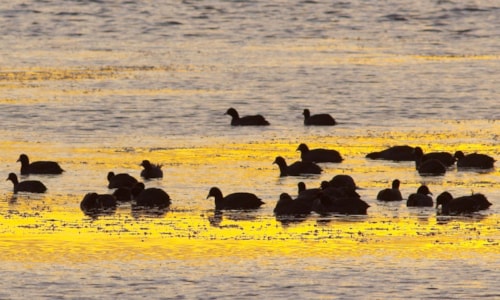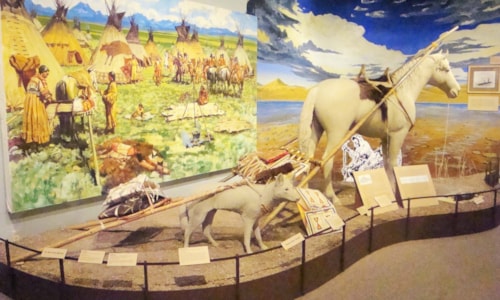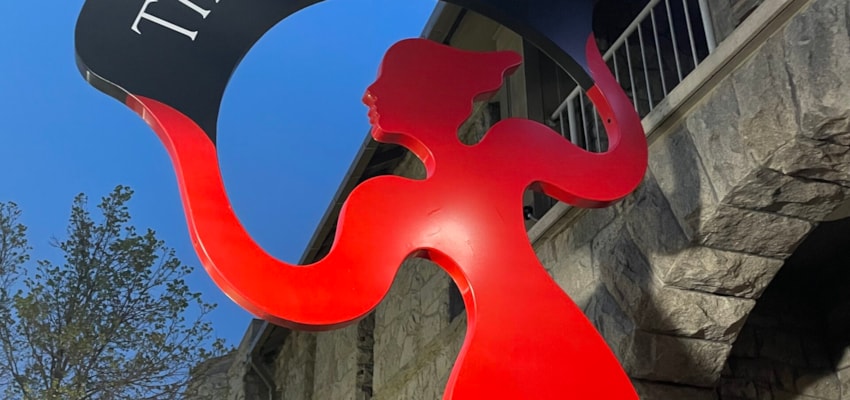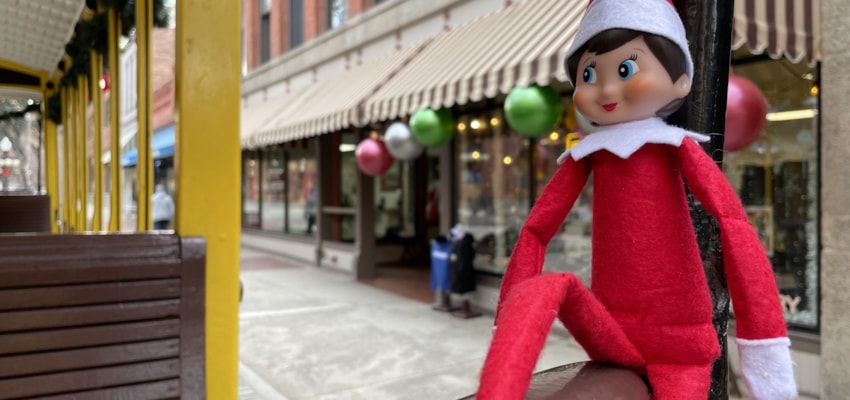Montana Treasures | The Helena Capitol Rotunda Paintings
Four beautiful roundels adorn the interior of the Montana Capitol buildings elegant rotunda. Painted by the firm F. Pedretti’s Sons (who were responsible for many of the paintings in the Capitol) in 1902, each of the paintings depicts a characteristic “type” who played a role in Montana’s early development. They are: “The Indian Chief”, “The Trapper”, “The Prospector”, and “The Cowboy.”
Despite the fact that the roundels were supposed to celebrate themes of Montana’s history rather than individuals, three of the four paintings were based on real people.
Below, you can find links to more information about how each of these “types” contributed to the building of Montana. But first, who is missing from the Rotunda? What other “types” contributed their work, love, and lives to the region we now call Montana? There are many ways to answer that question, here are two:
Women. Women were always a vital force in the success of Montana and no story of the state is complete without acknowledging Montana’s remarkable women. (Though Jeannette Rankin does have a statue in both the Montana and U.S. Capitols, which is almost as good as a roundel).
Immigrant Laborers, and especially Chinese Laborers. The story of Montana is a story of hard work, and the romantic, individual portraits don’t quite capture the backbreaking work of the poor laborers (many of the them recent immigrants) who dug the mines, tilled the fields, and built the railroads. As we’ve pointed out before, the railroad was essential to the development of Montana, and Chinese laborers were essential to the building of the railroad.
Who else? What other groups do you think should be celebrated for the building and continued flourishing of Montana?
 |
“The Indian Chief” depicts the legendary Chief Charlo (1830-1910) who led the Salish people following his father’s death in 1870.
Native Americans have lived in the area we now call Montana for around 2000 years. Today twelve tribes call the state home. |
 |
Mountain Man Jim Bridger (1804-1881), after who the Bridger Mountains are named, gazes out of “The Trapper.”
Trappers were essential to the opening of Montana to Euro-Americans in the early 1800s and bringing Montana into the global economy. |
 |
“The Prospector” celebrates Henry Finnis Edgar (1826–1910), one of the six men who discovered gold in Alder Gulch in 1863.
From Bannack to Alder Gulch to Helena to Butte, the state as we know it today was shaped and defined by mining. |
 |
Only “The Cowboy” is nameless though, unsurprisingly, the painters turned to the magnificent work of Charlie Russell for inspiration.
Ranching and farming defines the state as much as anything today, from the endless grain fields of the east to the distinctive beaver slide hay stacks of the Big Hole. |
Images from the Montana Historical Society.

If you choose to travel through Southwest Montana, make sure you are up-to-date on the latest travel information for the State!











